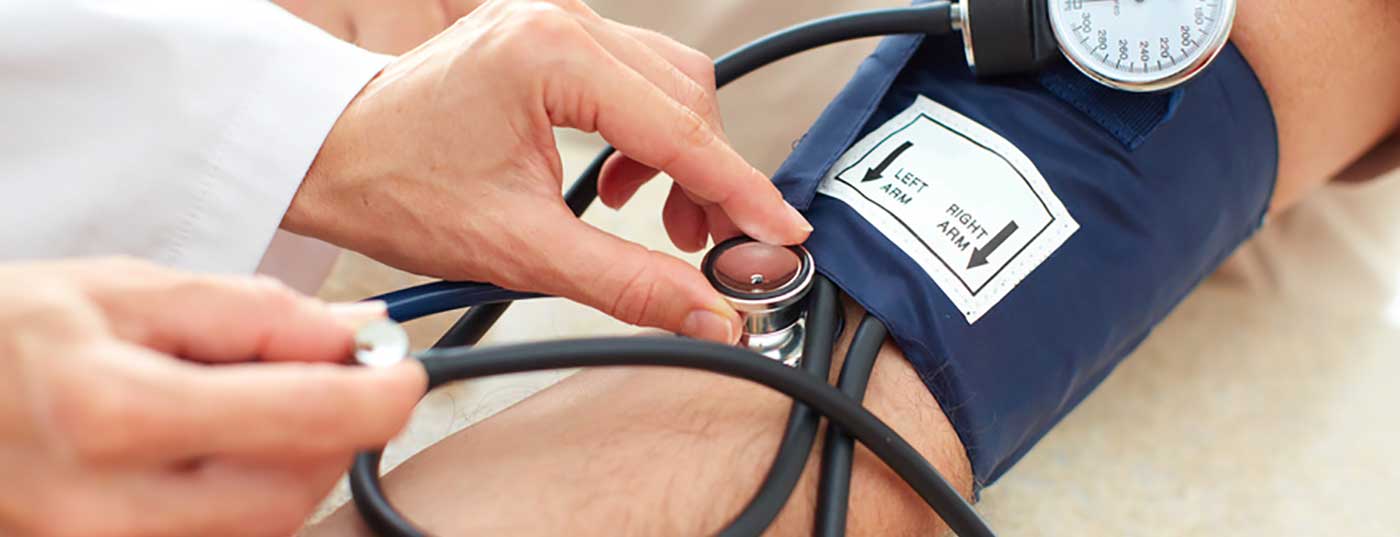If high blood pressure cannot be adequately controlled despite antihypertensive drugs, this may be due to undetected hormonal causes. Hypertension due to primary hyperaldosteronism, also known as “Conn syndrome,” is often overlooked for a long time, even though there are effective therapies for this hormone disorder, warned the German Society for Endocrinology on the occasion of this year’s World Heart Day.
If blood pressure cannot be set below 140/90 mmHg in the long term, even with three different medications, one should always check for a possible Conn syndrome, advises the German Society for Endocrinology (DGE) [1]. The hormone aldosterone is produced in the adrenal glands and regulates the body’s salt and fluid levels. In the case of aldosterone excess, an increase in sodium and thus water reabsorption in the kidney eventually leads to an increase in blood pressure. “Normally, the production of aldosterone is integrated into a hormonal network that regulates blood pressure and fluid balance,” explains Prof. Martin Reincke, MD, who specializes in research on the adrenal glands at Ludwig Maximilian University in Munich [1]. Several hormones are produced in the small glands that cover the kidneys like tiny caps, one of which is aldosterone. The suspected diagnosis of hyperaldosteronism can be determined by the so-called aldosterone-renin quotient (ARQ) [2].
One in three treatment-resistant hypertensives is affected
Prof. Reincke cites current figures on the frequency of Conn syndrome [1]: Thus, 6% of hypertensive patients in general practice suffer from it, 10% of patients in specialized blood pressure centers and up to 30% of those with therapy-resistant hypertension. The first step in diagnosis is laboratory testing. In addition to a hormone determination, this includes a saline load test, which usually decreases aldosterone levels. If this is not the case, patients should be referred to a specialist clinic for a final diagnosis. There, a catheter is used to determine the aldosterone concentration in the veins of both adrenal glands. The result has an immediate impact on the treatment. If the concentration is elevated on only one side, Conn syndrome can be cured by removing an adrenal gland. This is according to Porf. Reincke in about one third of patients. Many then no longer need antihypertensive drugs after surgery. If both adrenal glands produce too much aldosterone, surgery is not possible. Then aldosterone antagonists, which switch off the hormone by blocking the receptors on the cells, help. The agents have been approved for some time, but they are rarely used for other hypertensive disorders. Treatment outcomes of Conn syndrome have improved in Germany in recent years, not least thanks to a highly regarded patient registry that has documented all cases from leading treatment centers since 2006 [3]. So far, data on 1600 patients have been entered into the Conn Registry, founded and directed by Prof. Reincke: “The registry helps us to improve the diagnosis, treatment and care of these patients, as well as to set standards for quality control.” [1].
Study shows: Probability of Conn syndrome increases with increasing degree of hypertension
In the prospective PATO (“Primary Aldosteronism in Torino”) study, which involved nine primary care practices, more than 1600 hypertensive patients were screened for the presence of hyperaldosteronism according to guidelines between 2009 and 2014 [4]. 569 of the study participants had newly manifested hypertension, and 1103 had known hypertension. If hormonal status was abnormal, further diagnostics in the form of confirmatory testing, imaging, and adrenal vein catheterization were performed. 5.9% of subjects had confirmed Conn syndrome at the end, including 27 with aldosterone-producing adenoma (benign tumor) and 64 with bilateral hyperplasia of the adrenal glands. Prof. Reincke considered the fact that the probability of Conn increased with increasing degree of hypertension as another interesting result [2]. Thus, 11.8% of patients with grade 3 hypertension, the most severe form of hypertension (blood pressure ≥180/110 mmHg), were found to have Conn syndrome, compared with 3.9% for grade 1 hypertension (≥140/90 mm Hg) and 9.7% for grade 2 (≥160/100 mmHg).
Literature:
- “World Heart Day: curable hypertension in Conn syndrome is often detected late,” German Society of Endocrinology, Sept. 29, 2021.
- “Hormonally induced hypertension is curable: Screening Hypertensive Patients for Conn Syndrome,” Arbeitsgemeinschaft der Wissenschaftlichen Medizinischen Fachgesellschaften e.V., May 10, 2017.
https://idw-online.de/de/news674361 - Conn Registry: German Registry of Primary Hyperaldosteronism: http://www.conn-register.de/register1.html, (last accessed Oct 22, 2021).
- Monticone S, et al: Prevalence and Clinical Manifestations of Primary Aldosteronism Encountered in Primary Care Practice. J Am Coll Cardio 2017; 69(14): 1811-1820.
HAUSARZT PRAXIS 2021; 16(11): 39











